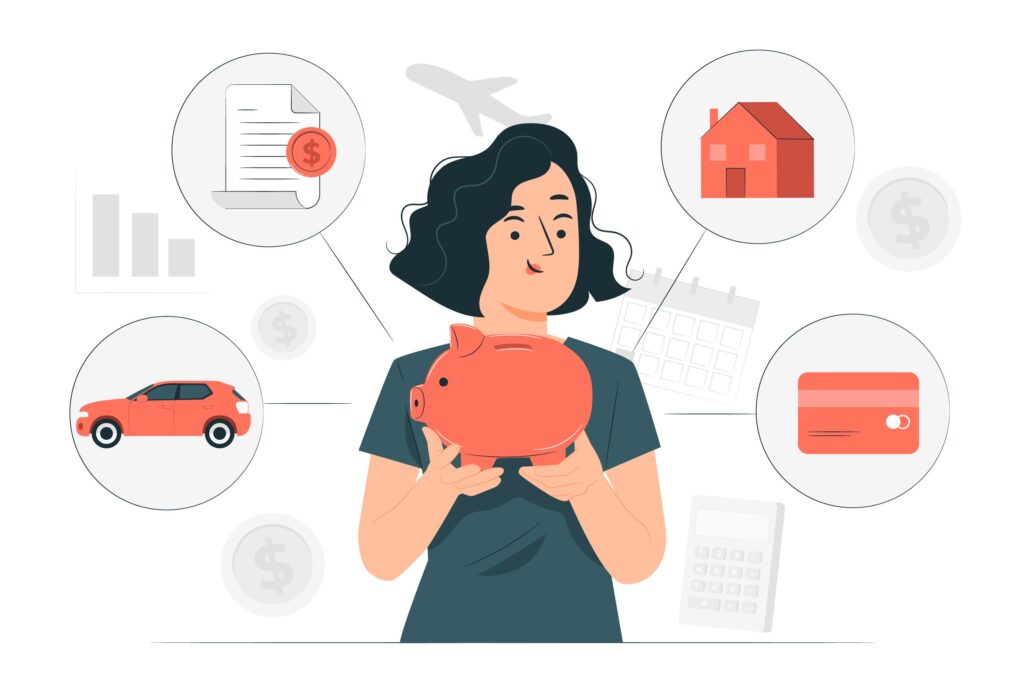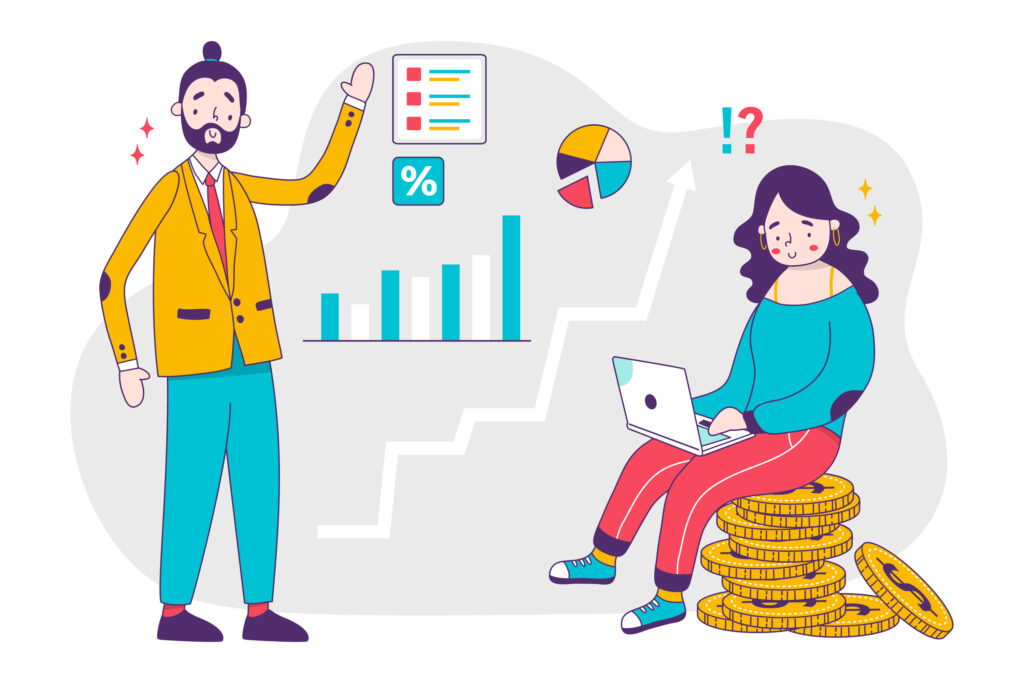
Table of Contents
Understanding Universal Basic Assets
Universal Basic Asset (UBA) is a concept that proposes a fundamental shift in the way society addresses economic inequality and meets basic needs. Unlike Universal Basic Income (UBI), which provides periodic cash payments to individuals regardless of their employment status, UBA focuses on providing access to essential assets or resources that support individuals’ long-term economic security. And can increase opportunities.
The idea behind UBA is to ensure that everyone has access to certain key assets or resources that are essential to their well-being and economic participation. These assets can vary but typically include things like education, health care, housing, or even ownership stakes in productive enterprises.
Here are some of the key components and ideas of the Universal Basic Asset:
Asset Ownership: UBA emphasizes asset ownership rather than just income. This could mean granting each individual an ownership share in some resource or enterprise, such as a sovereign wealth fund, which distributes dividends or profits to all citizens.
Long-term security: Unlike cash transfers that can be quickly spent and do not provide long-term benefits, assets such as education, health care, or ownership stakes can contribute to the long-term economic security and mobility of individuals. Are.
Equal Opportunity: UBA aims to reduce inequality by ensuring that everyone has access to essential resources regardless of socio-economic background. By providing universal access to critical assets, UBA seeks to provide a more level playing field for all individuals.
Economic Empowerment: By providing individuals with an ownership stake or access to essential resources, UBA can empower people to fully participate in the economy. This can lead to increased entrepreneurship, innovation and economic productivity.
Funding Mechanism: The funding mechanism to implement UBA needs to be carefully considered. This may involve various approaches such as taxation, revenue from public assets, or even public-private partnerships.
Policy Challenges: Implementing UBA will need to address various policy challenges, including determining which assets should be considered universal, how to distribute them equitably, and Sustainable funding should be ensured in the long term.
Overall, the Universal Basic Asset represents a different approach to addressing economic inequality and meeting basic needs, which serves as a means to promote long-term economic security, equality of opportunity, and economic empowerment for all individuals in society. Emphasizes ownership of essential resources.
The idea behind a Universal Basic Asset

behind a Universal Basic Asset
The idea behind Universal Basic Assets (UBA) revolves around the concept of providing every individual access to essential resources or assets that are critical to their well-being and economic participation. Unlike Universal Basic Income (UBI), which focuses on providing periodic cash payments to individuals, UBA emphasizes the importance of ownership and access to significant assets.
The main principles and objectives behind UBA include:
Ownership and Access: UBA aims to ensure that every individual has ownership or access to essential assets such as education, health care, housing, or ownership stake in productive enterprises. These assets are considered fundamental for individuals to flourish and participate fully in society.
Long-Term Security: By providing access to assets rather than just income, UBA seeks to promote long-term economic security for individuals. For example, access to education and health care can improve individuals’ skills, health outcomes, and overall well-being, leading to greater economic resilience over time.
Equality of Opportunity: UBA strives to reduce inequality by ensuring that everyone has equal access to vital resources regardless of their socio-economic background. By providing universal access to essential assets, UBA aims to level the playing field and create more equitable opportunities for all individuals.
Economic Empowerment: Property ownership can empower individuals to participate more actively in the economy. For example, ownership stakes in productive enterprises can provide individuals with a source of income, encourage entrepreneurship, and promote economic freedom.
Social Cohesion: UBA can contribute to social cohesion by reducing inequalities in access to essential resources and promoting a sense of shared ownership and responsibility within the society.
Sustainability and funding: Implementing UBA requires sustainable funding mechanisms, which may include various approaches such as taxation, revenues from public assets, or other innovative financing methods. Ensuring the long-term viability of UBA programs is critical to their effectiveness and impact.
Overall, the idea behind a Universal Basic Asset is to renew the social contract by emphasizing the importance of asset ownership and access to essential resources as a means of promoting economic security, equality of opportunity, and social well-being for all members of society. Have to shape.
What is Universal Basic Asset?
Universal Basic Assets (UBA) is a socio-economic concept that proposes to provide every person in a society with access to essential assets or resources that are considered fundamental to their well-being and economic participation. Unlike Universal Basic Income (UBI), which provides periodic cash payments to individuals, UBA focuses on providing ownership or access to significant assets.

The assets provided through the UBA program can vary depending on social preferences and needs but often include:
- Education: Access to quality education, including early childhood education, primary and secondary school education, vocational training and higher education.
- Health Care: Access to comprehensive health services, including preventive care, medical treatment, and mental health services.
- Housing: Access to safe, affordable and adequate housing to ensure shelter and stability for individuals and families.
- Financial Assets: Ownership stakes or shares in productive enterprises, public utilities, or natural resources that can provide individuals with a source of income or wealth accumulation.
- Technical resources: Access to information and communication technologies (ICTs) such as the Internet and digital tools to facilitate economic participation and access to information.
- Environmental Resources: Access to clean air, water, and the natural environment that are essential for health, well-being, and ecological sustainability.
The principles underlying the Universal Basic Asset include:
Equality of Opportunity: UBA aims to reduce socioeconomic inequalities by ensuring that everyone has equal access to essential resources, regardless of their background or circumstances.
Long-Term Security: Providing access to assets, rather than just income, promotes long-term economic security and resilience for individuals and communities.
Empowerment and Agency: Property ownership empowers individuals to actively participate in the economy, make choices about their lives, and pursue personal and professional growth opportunities.
Social Cohesion: UBA programs can promote social cohesion by promoting shared ownership and responsibility within society, as well as addressing systemic inequalities and fostering solidarity.
Implementing the Universal Basic Assets requires careful planning, including determining the specific assets to be provided, designing funding mechanisms, and ensuring effective governance and administration of the program. The ultimate goal of UBA is to create a more equitable and inclusive society where everyone has the opportunity to thrive and fulfill their potential.
Advantages and disadvantages of Universal Basic Asset
Implementing Universal Basic Asset (UBA) has both advantages and disadvantages. Here are some advantages and disadvantages:

professional:
Inequality Reduction: UBA can help reduce socio-economic inequality by ensuring that everyone has access to essential assets, regardless of background. This promotes more equal opportunity and can contribute to greater social and economic equality.
Long-term security: Unlike cash transfers, which can be spent immediately, assets provided through UBA, such as education, health care, or ownership stake, contribute to the long-term economic security and stability of individuals. Can do.
Empowerment: Ownership of assets empowers individuals to participate more actively in the economy, make decisions about their lives, and pursue personal and professional growth opportunities.
Investment in Human Capital: UBA can encourage investment in human capital by providing access to education and health care, which are essential for the development and productivity of individuals. This could lead to a more skilled and healthier workforce, which would benefit the economy as a whole.
Social Cohesion: UBA programs can promote social cohesion by promoting shared ownership and responsibility within society. By ensuring that everyone has access to essential resources, UBA can strengthen social bonds and reduce social tension.
Shortcoming:
Cost: Implementing a UBA requires significant financial resources, especially if it involves providing access to expensive assets such as education and health care. Financing such programs may require higher taxes or redistribution of existing resources, which may be politically challenging.
Administration and Governance: Designing and administering UBA programs can be complex and require effective governance structures to ensure efficient delivery of assets and prevent misuse or abuse of resources.
Disincentives to work: Critics argue that providing universal access to assets may reduce the incentive for individuals to work or obtain additional education or training. This could potentially reduce workforce participation and productivity.
Unintended Consequences: There may be unintended consequences associated with UBA, such as inflationary pressure if increased demand for certain assets exceeds supply, or if asset prices are artificially inflated. So market distortions may occur.
Dependence: Some critics argue that UBA may create dependency on government support and discourage self-reliance and personal responsibility. This may promote a culture of entitlement and reduce individuals’ motivation to strive for self-improvement.
Overall, while Universal Basic Assets has the potential to address inequality and promote economic security and opportunity, it is necessary to carefully consider its pros and cons to design effective and sustainable policies that maximize benefits while minimizing drawbacks. Let’s maximize.
What are the uses of Universal Basic Asset?
Universal Basic Asset (UBA) can serve a variety of purposes and address multiple societal needs. Here are some of the major uses and benefits of UBA:

Promoting Economic Security: UBA can provide individuals with access to essential assets, such as education, health care, or housing, which contribute to their long-term economic security and stability. This can help reduce poverty, mitigate the impact of economic downturns, and boost resilience against financial shocks.
Reducing Inequality: By ensuring that everyone, regardless of socio-economic background, has access to vital resources, UBA can help reduce inequality and promote social and economic equality Is. This can lead to a more inclusive society where everyone has the opportunity to get ahead.
Investing in Human Capital: Providing access to assets such as education and health care can help individuals develop their skills, knowledge, and health, creating a more productive and skilled workforce.
Promoting Social Cohesion: UBA programs can promote social cohesion by promoting shared ownership and responsibility within society. By ensuring that everyone has access to essential resources, UBA can strengthen social bonds, reduce social tension and foster a sense of belonging and solidarity.
Empowering Individuals: Ownership of assets empowers individuals to participate more actively in the economy, make decisions about their lives, and pursue personal and professional growth opportunities. This can lead to increased economic mobility, self-reliance, and agency.
Addressing market failures: UBA can help address market failures in areas such as health care, education, or housing, where access to needed resources may be limited or unequal. By providing universal access to these assets, UBA can ensure that market forces do not leave vulnerable populations behind.
Encouraging Innovation and Entrepreneurship: By providing individuals with ownership stake or access to resources, UBA can encourage innovation and entrepreneurship. Individuals who have access to essential assets may be more likely to take risks, invest in new ventures, and contribute to economic growth and dynamism.
Key components of the UBA ecosystem
The UBA ecosystem consists of various components that work together to implement and maintain Universal Basic Assets programs. Here are some of the key components of the UBA ecosystem:
Assets and Resources: The core of the UBA ecosystem is the set of assets and resources provided to individuals. These assets may include education, health care, housing, ownership stakes in productive enterprises, financial resources, technological resources, and environmental resources.
Program Design and Administration: Designing and administering UBA programs requires careful planning and coordination. This includes determining the specific assets to be provided, setting eligibility criteria, establishing delivery mechanisms, and ensuring effective administration and oversight of the program.
Financing Mechanism: UBA programs require sustainable funding mechanisms to finance the provision of assets to individuals. Funding sources may include taxation, revenue from public assets, natural resource royalties, philanthropic contributions or other innovative financing methods.
Delivery Infrastructure: UBA programs require an infrastructure to efficiently and equitably distribute assets to individuals. This may include educational institutions, health care facilities, housing programs, financial institutions, or setting up digital platforms for access to resources.
Data and Information Systems: Effective implementation of UBA programs depends on strong data and information systems to track eligibility, distribute assets, monitor outcomes, and evaluate program effectiveness. This may include the use of digital technologies and data analytics tools.
Community Engagement and Participation: Involving communities in the design, implementation and evaluation of UBA programs is essential to ensure their success and relevance. Community participation can help identify local needs, build trust, and promote social cohesion.
Policy and Legal Frameworks: UBA programs operate within a policy and legal framework that defines their objectives, rights, responsibilities and regulatory requirements. It includes the laws, regulations, policies and agreements governing the provision of assets, funding sources and program administration.
Research and Evaluation: Ongoing research and evaluation is essential to assess the impact of UBA programs, identify areas for improvement, and inform policy decisions. This may include conducting studies, collecting data, analyzing the results, and soliciting feedback from program participants and stakeholders.
Partnerships and Collaborations: Collaboration between government agencies, civil society organisations, private sector entities, academia and international partners is critical to the success of UBA programmes. Partnerships can leverage resources, expertise, and networks to increase program effectiveness and sustainability.
Advocacy and Public Awareness: Building public awareness, support and advocacy for UBA programs is essential to generate political will, mobilize resources and foster a supportive social and political environment. This may include communication campaigns, education efforts, and grassroots organizing.
Overall, the UBA ecosystem comprises a diverse set of components that interact and influence each other to effectively implement, sustain and evaluate Universal Basic Assets programs. Collaboration, innovation and adaptability are the keys to building a resilient UBA ecosystem that can address emerging societal needs and challenges.
What is UBA token?
A “UBA Token” may be a digital or cryptographic token that represents ownership or access rights to certain universal basic assets within the UBA Program. These tokens can be distributed to eligible individuals as part of the UBA initiative and can be used to access various essential resources or services.
Here are some of the key features of a hypothetical UBA token:
Digital Representation: UBA tokens will likely exist on a digital platform or blockchain network, providing a secure and transparent way to record ownership or access rights to the asset.
Asset Backing: Each UBA token will be backed by a specific asset or a bundle of assets included in the UBA program, such as education credits, health care vouchers, housing allowances, or ownership stakes in productive enterprises.
Redeemable for Assets: Holders of UBA Tokens will be able to redeem them for related assets or services specified by the UBA Program. For example, tokens representing education credits can be used to enroll in educational programs, while tokens representing health care vouchers can be used to access medical services.
Transferability: UBA tokens are transferable between individuals, allowing flexibility in accessing and exchanging assets. However, there may be restrictions or rules governing the transfer of tokens to prevent misuse or abuse.
Traceability and Accountability: The use of blockchain technology can enable transparent tracking and auditing of UBA tokens, ensuring accountability and preventing fraud or copying.
Privacy and Security: Measures will be implemented to protect the privacy and security of token holders’ personal information and transactions while maintaining transparency and accountability within the UBA ecosystem.
It is important to note that the “UBA Token” concept is hypothetical and implementation would require careful consideration of various legal, technical, and social factors. Additionally, any actual implementation will likely vary depending on the specific design and objectives of the UBA program.
Unique Features of UBA Finance
Asset Distribution: A UBA finance platform can facilitate the distribution of universal basic assets to eligible individuals. This may include assets such as education credits, health care vouchers, housing subsidies, or ownership stakes in productive enterprises.
Digital Infrastructure: Leveraging digital technologies, a UBA finance platform can provide an efficient and user-friendly interface for individuals to access and manage their universal infrastructure assets. This may include a web or mobile application for account management, asset redemption, and tracking usage.
BLOCKCHAIN INTEGRATION: Integration with blockchain technology can enhance transparency, security, and traceability within the UBA finance ecosystem. Blockchain can be used to record asset ownership, track transactions, and ensure the integrity of asset distribution processes.
Customizable Asset Allocation: Individuals participating in the UBA program through the Finance Platform may have the ability to customize their asset allocation based on their specific needs and preferences. For example, they may choose to allocate more credits to education or health care, depending on their circumstances.
Education and Empowerment: The UBA Finance platform can provide educational resources and tools to empower individuals to make informed decisions about their assets. This may include financial literacy training, business guidance, or access to entrepreneurship support services.
Community Engagement: Facilitating community engagement and collaboration can be a key feature of UBA finance. This may include forums, social networks or local events where participants can connect, share experiences and support each other in effectively using their universal basic assets.
Partnerships and Integrations: Collaborating with educational institutions, healthcare providers, housing agencies and other service providers can increase the range and quality of assets available through the UBA Finance platform. Integration with existing social service systems can streamline access for participants.
Data Privacy and Security: Ensuring the confidentiality and security of participants’ personal information and transactions will be of paramount importance. The UBA Finance platform will require robust measures to protect sensitive data while complying with relevant privacy regulations.
Evaluation and Impact Measurement: It will be necessary to put in place mechanisms to evaluate the impact of UBA programs and measure outcomes. The finance platform can collect data on asset utilization, socioeconomic indicators, and participant feedback to assess program effectiveness and inform future improvements.
Sustainability and Scalability: Building a sustainable and scalable UBA finance platform will require careful planning and resource allocation. Ensuring long-term funding, stakeholder engagement and an adaptive governance structure will be critical to the success and longevity of the platform.
These are some of the potentially extraordinary features that a hypothetical UBA finance platform could incorporate based on the principles and objectives of the Universal Basic Assets programmes. Actual implementation may vary depending on specific program goals, contexts, and technical capabilities.
Future prospects of UBA Finance

The future potential of UBA finance, or a financial platform that facilitates the distribution and management of Universal Basic Assets (UBA), could be significant, providing transformative benefits to individuals, communities and societies. Here are some possible future prospects for UBA Finance:
Reducing Inequality: UBA Finance has the potential to play a significant role in reducing socio-economic inequality by ensuring that everyone has access to essential assets such as education, healthcare and housing. By providing universal access to these assets, UBA Finance can help level the playing field and create more equitable opportunities for all individuals regardless of their background.
Promoting Economic Empowerment: By providing individuals with an ownership stake or access to essential resources, UBA Finance can empower individuals to fully participate in the economy. This can lead to increased entrepreneurship, innovation and economic productivity, thereby promoting overall economic growth and prosperity.
Enhancing Financial Inclusion: UBA Finance can contribute to increasing financial inclusion by providing access to financial services and resources to disadvantaged populations. This can help individuals build financial stability, access credit, and participate more actively in the formal economy.
Improving Social Cohesion: UBA Finance can promote social cohesion by promoting shared ownership and responsibility within the society. By ensuring that everyone has access to the resources they need, UBA Finance can strengthen social bonds, reduce social tensions and foster a sense of belonging and solidarity.
Driving Innovation: UBA Finance can drive innovation in financial services and social welfare programs by leveraging technology such as blockchain and digital platforms to improve the efficiency, transparency and accountability of asset distribution and management processes.
Solving future challenges: UBA Finance helps societies address future challenges such as automation, globalization and climate change by providing individuals with the resources and skills needed to adapt and thrive in a rapidly changing environment. Could.
Building Resilience: UBA Finance can contribute to building resilience at the individual, community and societal levels by providing individuals with the resources needed to cope with economic shocks, natural disasters and other unexpected events.
Advancing the Sustainable Development Goals: UBA finances the United Nations Sustainable Development Goals by promoting inclusive economic growth, reducing poverty, ensuring access to quality education and health care, and fostering partnerships for sustainable development. Aligns with the Goals (SDGs).
Overall, the future prospects of UBA Finance are promising, offering opportunities to address pressing social and economic challenges, promote inclusive growth and prosperity, and build more resilient and equitable societies. However, realizing these potentials will require collaboration, innovation and commitment from governments, civil society organisations, the private sector and other stakeholders to design and implement effective UBA finance initiatives.

